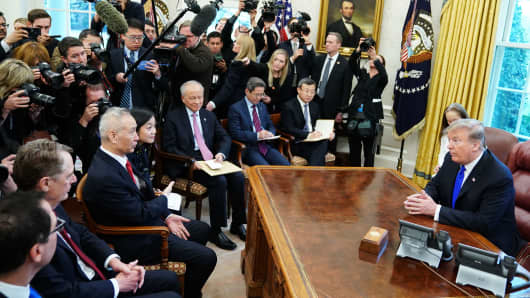The U.S. and China appear more likely to reach some sort of trade agreement during an expected meeting between their two presidents later this month — but some tariffs would most probably be kept in place, predicted Goldman Sachs in a report on Monday.
"Our base case is that an agreement would leave some US tariffs in place, potentially lifting them in stages as various commitments under the agreement have been met. We nevertheless expect some US tariffs to remain in place into 2020," the U.S. investment bank wrote in the report.
Goldman Sachs said that trade tensions between the two economic powerhouses appear to have "improved" over the last few weeks, with officials from both countries meeting several times and citing progress.
For much of 2018, the U.S. and China were embroiled in a tit-for-tat trade fight, as they increased levies on each other's goods over disagreements about Chinese subsidies and alleged forced technology transfers from American firms to their Chinese partners.





